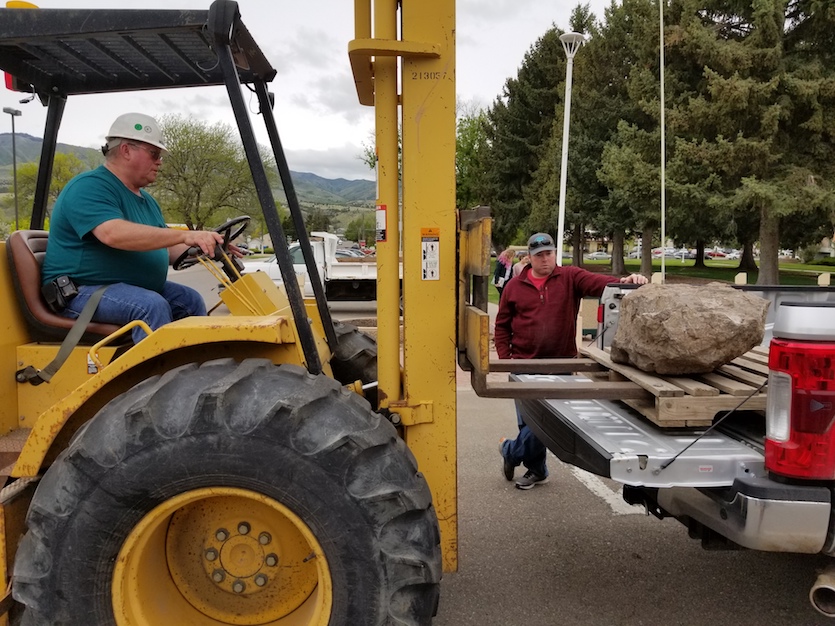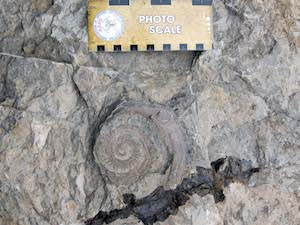Monsanto donates new shark fossil to Idaho Museum of Natural History
June 18, 2018

POCATELLO – The Idaho Museum of Natural History on the Idaho State University Pocatello campus recently received a new shark fossil from Monsanto.
A spiral of fossil shark teeth, Helicoprion, was exposed during mining operations at the Monsanto mine in Soda Springs. Measuring over 8 inches in diameter, the fossil adds a new story to museum’s growing collection of Idaho’s natural history.
Monsanto Mine Operations Coordinator, Cody Allen said, “As proud members of the Southeast Idaho community, we are excited to help preserve this rare and valuable piece of local history. Alongside experts at the Idaho Natural History Museum and Idaho State University, we will do our part to ensure these fossils are protected and preserved. We hope this discovery will lead to important learning opportunities for the community and even inspire the next generation of scientists from Idaho.”
 The Idaho Museum of Natural History is home to the largest collection of Helicoprion sharks in the world. Museum Director, Leif Tapanila says “Our studies on Helicoprion show it was the largest predator on earth at the time, nearly 270 million years ago. Idaho is the best place on the planet to find these amazing fossils. We’re very grateful to our partners in the region for sharing their discoveries so we can make them available to the public for many years to come.”
The Idaho Museum of Natural History is home to the largest collection of Helicoprion sharks in the world. Museum Director, Leif Tapanila says “Our studies on Helicoprion show it was the largest predator on earth at the time, nearly 270 million years ago. Idaho is the best place on the planet to find these amazing fossils. We’re very grateful to our partners in the region for sharing their discoveries so we can make them available to the public for many years to come.”
The public will get a chance to see this shark fossil in the fall when the museum’s Buzzsaw Sharks of Idaho exhibit opens in October. This exhibit has traveled for the past five years sharing Idaho’s history with over half a million people across the United States.
The Idaho Museum of Natural History has been serving Idaho since 1934. To learn more about the museum please visit imnh.isu.edu
This tooth spiral is part of the lower jaw of an ancient shark that grew up to 25 feet in length and swam the oceans that used to cover eastern Idaho.

